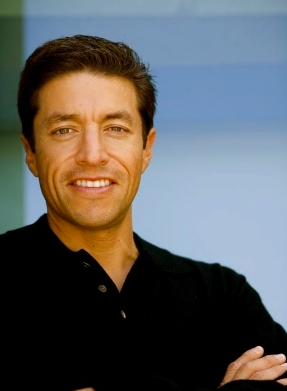|
Symphony
FROM THE NEW WORLD TO THE OLD WORLD
by Peter Lert
Saturday, June 14, 2025
Chamber
MC2 DUO RECITAL CLOSES 222'S SEASON
by Terry McNeill
Saturday, June 14, 2025
Choral and Vocal
CANTIAMO SONOMA'S LUSCIOUS A CAPELLA SINGING IN SEASON ENDING CONCERT
by Pamela Hicks Gailey
Sunday, June 8, 2025
Symphony
SRS SEASON ENDS WITH RESOUNDING TA-TA-TA-BANG
by Terry McNeill
Sunday, June 1, 2025
Symphony
YOUTHFUL VIRTUOSITY ON DISPLAY AT USO'S MAY CONCERTS
by Peter Lert
Saturday, May 17, 2025
Symphony
MYSTICAL PLANETS AND LIVELY GERSHWIN ORTIZ AT FINAL SRS CONCERT
by Peter Lert
Sunday, May 4, 2025
Symphony
VSO'S CONCERT MUSIC OF TIME, MUSIC OF PLACE
by Peter Lert
Sunday, April 27, 2025
VOCAL ELEGANCE AND FIRE AT THE 222'S RECITAL APRIL 26
by Pamela Hicks Gailey
Saturday, April 26, 2025
CANTIAMO SONOMA SINGS AN INSPIRED GOOD FRIDAY MOZART REQUIEM CONCERT
by Pamela Hicks Gailey
Friday, April 18, 2025
DRAMATIC SHOSTAKOVICH SYMPHONY CLOSES PHILHARMONIC'S 25TH SEASON
by Terry McNeill
Sunday, April 13, 2025
|
 |
 Pianist Gustavo Romero |
ROMERO'S ARTISTRY IN SLV RECITAL PROGRAMMING AND PERFORMANCE
by Terry McNeill
Wednesday, June 2, 2021
Gustavo Romero has been an admired visitor to North Bay stages, playing over a decade recitals at Dominican University, the Music at Oakmont concerts and at the Spring Lake Village Concert Series.
He returned June 2 to SLV in a virtual recital, videoed from his home concert hall the University of North Texas at Denton. UT/Denton has America’s largest music school, and Mr. Romero has been on the faculty there for many years.
Mr. Romero often focuses on one composer a season, but here he began after a concise verbal introduction with Haydn’s great C Major Sonata (Hob. XVI:48), from 1789. The piano sound was bright and the tempos in the variations judicious. Alberti bass figures abounded in the finale and the artist’s phrasing captured the witty nature of the music. Mordents and turns were brisk. Exemplary.
Three Chopin works followed, beginning with the E Minor Nocturne, Op. Post., and the C Minor Mazurka from Op. 56, No. 3. Both were recital highlights. The rise and fall of phrase and lovely cantabile characterized the Nocturne with extended inter-section pauses. Careful pedaling allowed the phrases for overlap. Playing in the Mazurka produced a nostalgic dance of almost six minutes, underscoring the mystery of this wonderful piece.
Arguably one of the composer’s greatest works, the B Minor Sonata (Op. 58) received a thoughtful performance with attention to detail, occasional chord breaking, some inner voices and in the opening Allegro Maestoso a one-time score variant (not the rare variant that occurs before the two main theme statements). It might have been a tiny memory lapse, but doubtful, as the pianist’s concentration was palpable and convincing.
The chosen tempo in the Scherzo was moderate, and in the work’s marvelous central Largo Mr. Romero’s rich bass sound and pedal point were effective. He rightly made a big ritard before the coda, and the pensive last two chords were beautifully played.
The finale (Presto) was a little underplayed but the pianist found novel inner voices and his rhythmic control was firm. It was an interpretation of high artistry, well crafted, and perhaps lacking only the last bit of individuality, sonority and authority.
Two Paderewski works from Op. 14 were surprising programming, the Sarabande being played in the style of Couperin and Rameau. The bantamweight ending was charming, even more effective as the following Capriccio reflected Paderewski’s homage to Scarlatti. Mr. Romero’s cross hand technique was exact and his articulation in scales was clear.
With such interesting pieces the artist’s choice for a conclusion had to be unique, and Alfred Grünfeld’s transcription from Strauss’ operetta “Die Fledermaus” was just that – Soirée de Vienne, Op. 56. Mr. Romero played many of the repeated sections differently, a tradition from the romantic pianist era, and he was flawless in rapid chords, legato Arpeggios and contrary motion skips. The performance had just the right amount of schmaltz and Austrian seduction.
|

